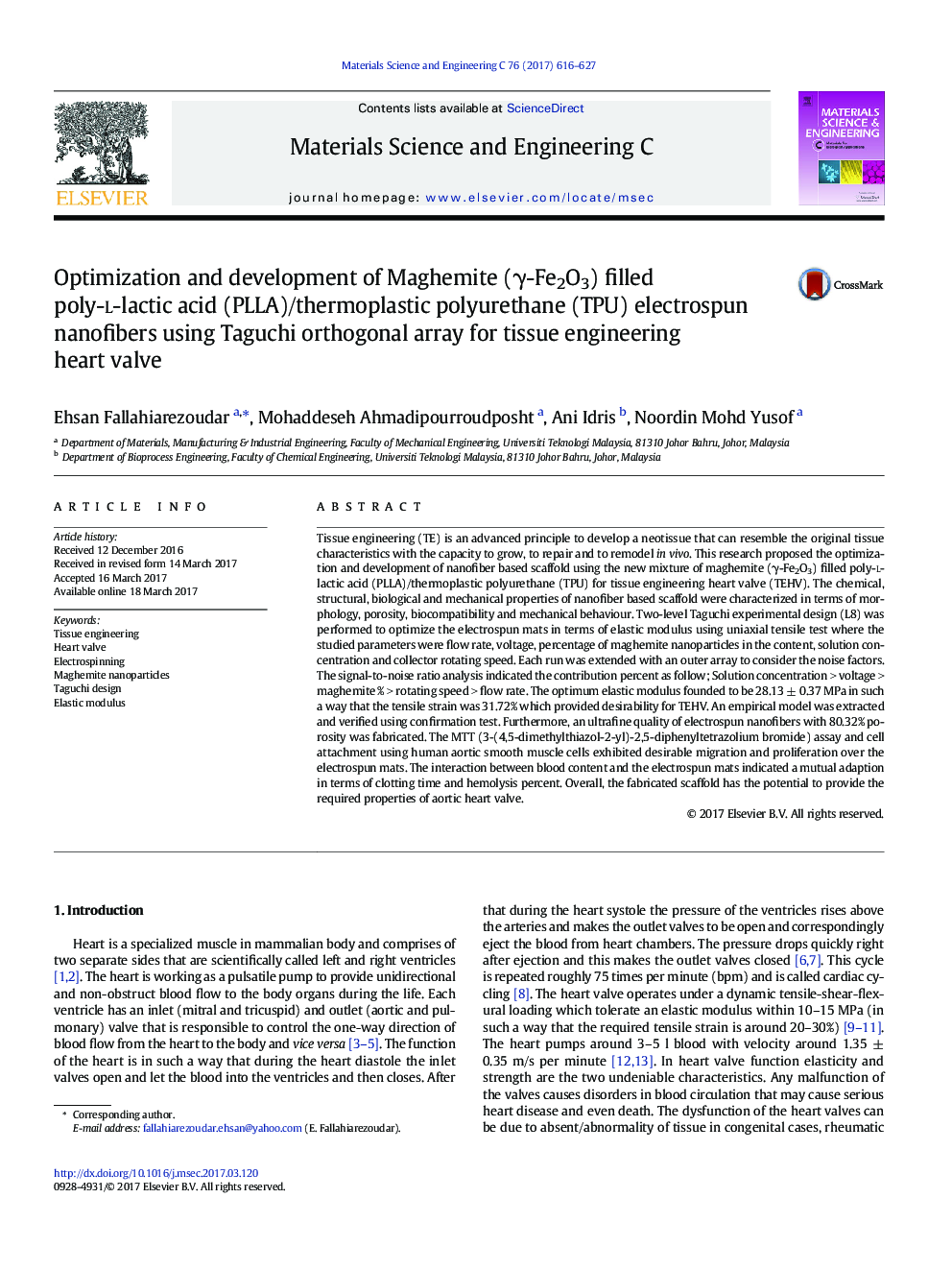| کد مقاله | کد نشریه | سال انتشار | مقاله انگلیسی | نسخه تمام متن |
|---|---|---|---|---|
| 5435155 | 1509145 | 2017 | 12 صفحه PDF | دانلود رایگان |

- The electrospinning involved parameters were optimized based on elastic modulus.
- The elastic modulus of PLLA/TPU-(γ-Fe2O3) electrospun mat was found to be 28.13 ± 0.3 MPa.
- Effect of maghemite in terms of biological/mechanical properties was confirmed.
- The structural/biological properties of electrospun mats were investigated.
- Proliferation and migration of HAOSMCs were confirmed over the scaffold.
Tissue engineering (TE) is an advanced principle to develop a neotissue that can resemble the original tissue characteristics with the capacity to grow, to repair and to remodel in vivo. This research proposed the optimization and development of nanofiber based scaffold using the new mixture of maghemite (γ-Fe2O3) filled poly-l-lactic acid (PLLA)/thermoplastic polyurethane (TPU) for tissue engineering heart valve (TEHV). The chemical, structural, biological and mechanical properties of nanofiber based scaffold were characterized in terms of morphology, porosity, biocompatibility and mechanical behaviour. Two-level Taguchi experimental design (L8) was performed to optimize the electrospun mats in terms of elastic modulus using uniaxial tensile test where the studied parameters were flow rate, voltage, percentage of maghemite nanoparticles in the content, solution concentration and collector rotating speed. Each run was extended with an outer array to consider the noise factors. The signal-to-noise ratio analysis indicated the contribution percent as follow; Solution concentration > voltage > maghemite % > rotating speed > flow rate. The optimum elastic modulus founded to be 28.13 ± 0.37 MPa in such a way that the tensile strain was 31.72% which provided desirability for TEHV. An empirical model was extracted and verified using confirmation test. Furthermore, an ultrafine quality of electrospun nanofibers with 80.32% porosity was fabricated. The MTT (3-(4,5-dimethylthiazol-2-yl)-2,5-diphenyltetrazolium bromide) assay and cell attachment using human aortic smooth muscle cells exhibited desirable migration and proliferation over the electrospun mats. The interaction between blood content and the electrospun mats indicated a mutual adaption in terms of clotting time and hemolysis percent. Overall, the fabricated scaffold has the potential to provide the required properties of aortic heart valve.
Journal: Materials Science and Engineering: C - Volume 76, 1 July 2017, Pages 616-627